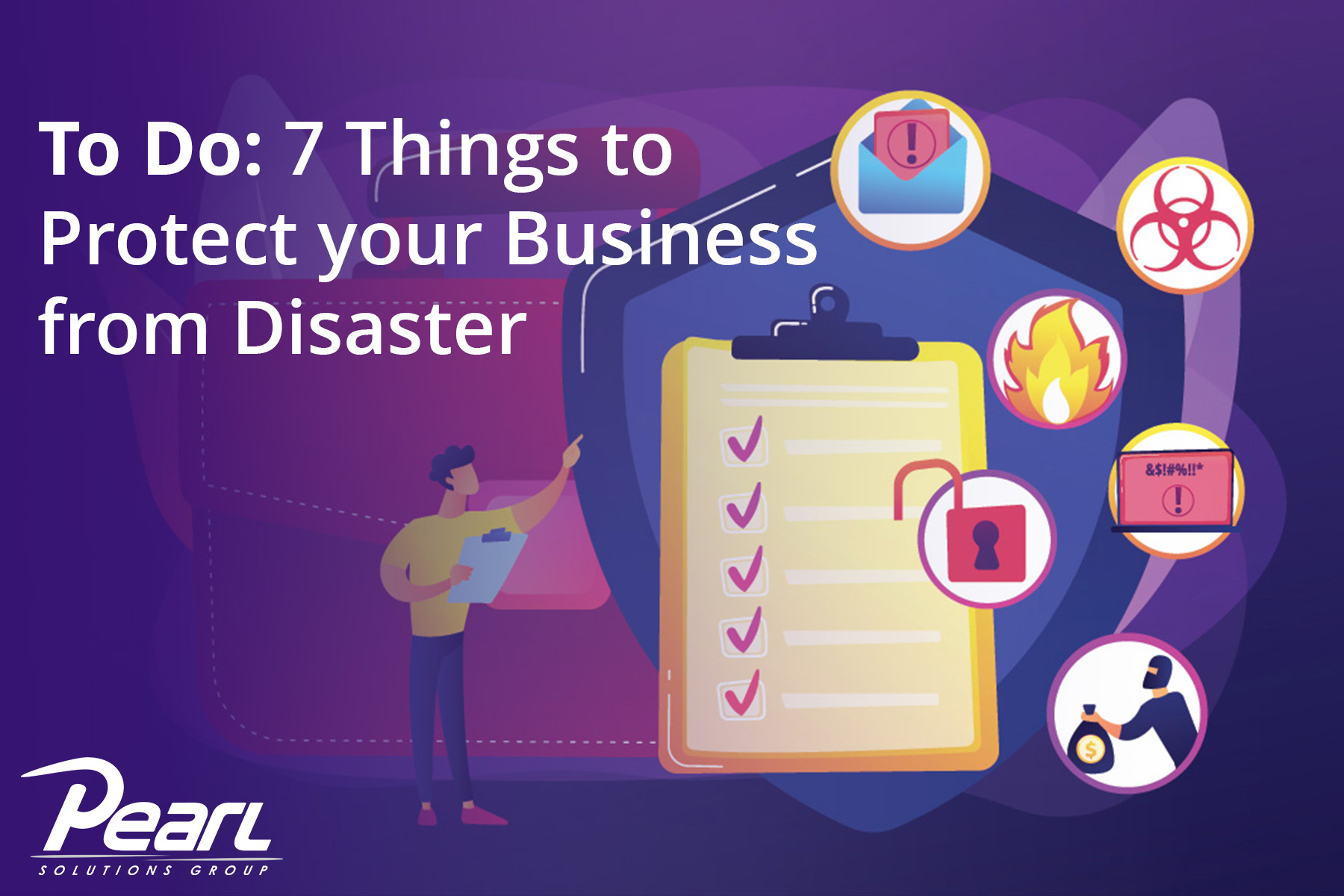Disasters, both natural and technological, can strike without warning, posing a significant threat to the continuity and success of your business. Whether it’s a power outage, data breach, or any unexpected crisis, being prepared is the key to minimizing the impact on your operations. Here are 7 things to protect your business from disaster.
1. Back Up Your Data Remotely You already know your data needs to be backed up daily, but many businesses still use in-house backup systems that can be damaged in a natural disaster or fire or could easily be stolen. Consider using remote backup solutions that store your data off-site, away from your physical location. Cloud-based backup services offer convenience, security, and accessibility, ensuring your data remains intact even if your physical infrastructure is compromised.
2. Automate Your Backup Human error can lead to missed backups which can be catastrophic in the event of a disaster. Schedule automatic backups at regular intervals to ensure that your data is completely and consistently protected.
3. Use a Quality Surge Protector with an Uninterruptible Power Supply Battery Unpredictable power surges can wreak havoc on your electronic devices and systems. Invest in high-quality surge protectors coupled with uninterruptible power supply (UPS) batteries. A UPS provides a temporary power source during outages, giving you enough time to save important work and shut down systems properly. This prevents data loss and potential hardware damage.
4. Elevate Servers or Utilize Cloud Services Physical threats, such as flooding or leaks, can seriously impact your on-premises servers. Elevate your servers above floor level inexpensively with server racks to mitigate potential water damage. Alternatively, consider transitioning some or all of your IT infrastructure to the cloud. Cloud services offer scalability, redundancy, and remote accessibility, making them a robust solution for disaster recovery.
5. Enable Remote Access and Management of Your Network The ability to manage and access your network remotely is invaluable during emergencies. This will allow you and your staff to keep working if you cannot go into your office. It also allows your IT staff or IT vendor partner to be able to access your network remotely in the event of an emergency or for routine maintenance.
6. Have a Documented Disaster Recovery & Business Continuity Plan A well-defined disaster recovery and business continuity plan is the backbone of your preparedness strategy. Outline the steps to take in various disaster scenarios, including data breaches, natural disasters, and system failures. This plan should encompass data recovery processes, communication strategies, employee roles, and alternate operating procedures to ensure a seamless transition during crises.
7. Hire a Trusted Professional to Help Navigating the complexities of disaster preparedness and recovery can be overwhelming. Trying to recover your data after a disaster without professional help could be the difference between a quick, successful recovery or losing your business completely. Even if you have IT on staff, you’ll need extra resources that can focus on recovery only.
The survival of your business relies on how quickly your network can be back up and running after a natural disaster, server crash, hacker attack, or other data-erasing tragedy. Implementing these seven steps can significantly enhance your business’s resilience and minimize the potential impact of unexpected events. If you need help with these steps or are not sure where your organization stands today regarding I.T. disaster preparedness, reach out. Pearl Solutions Group is a Managed Service Provider with expertise in building, managing, securing, and recovering IT networks.




